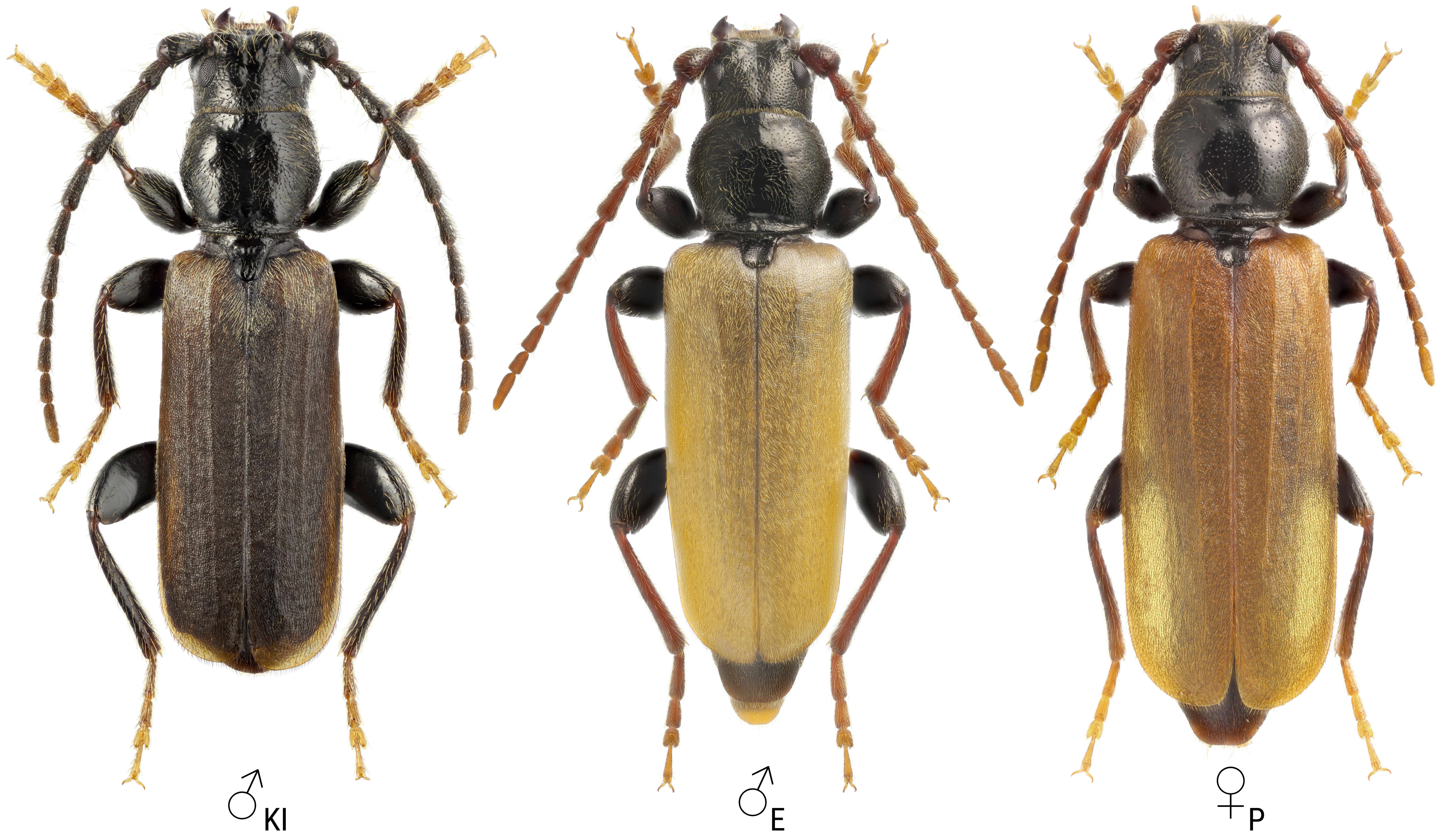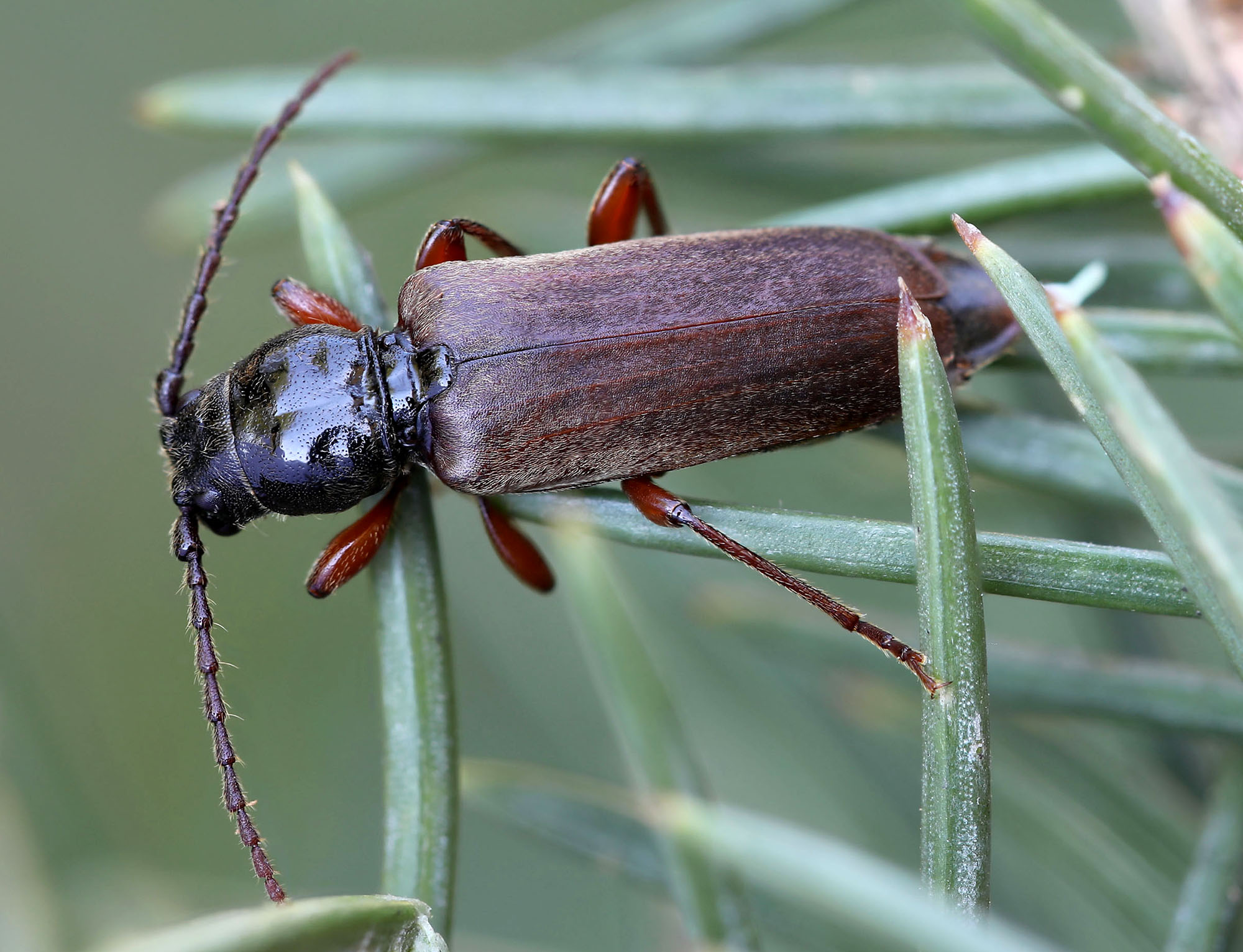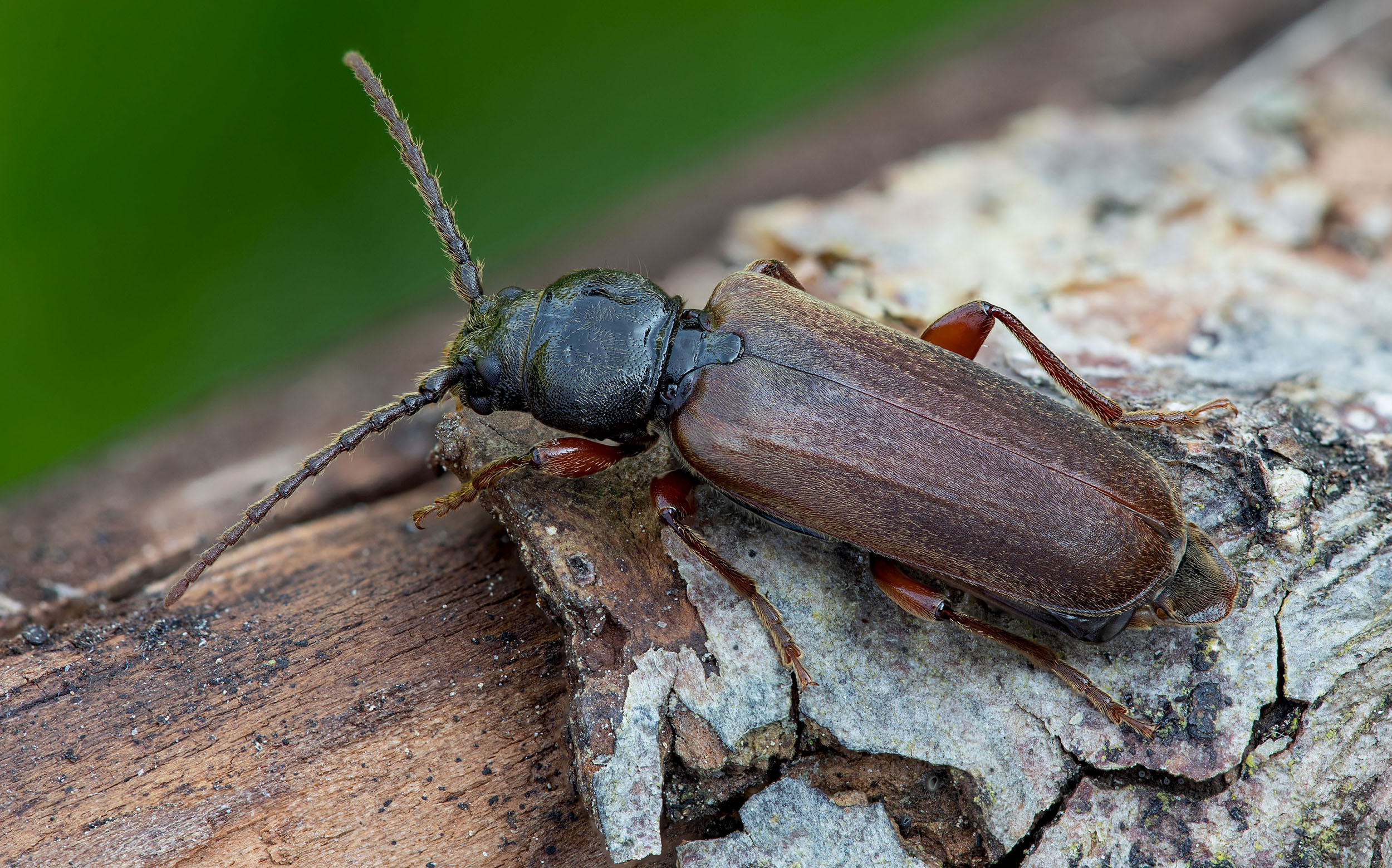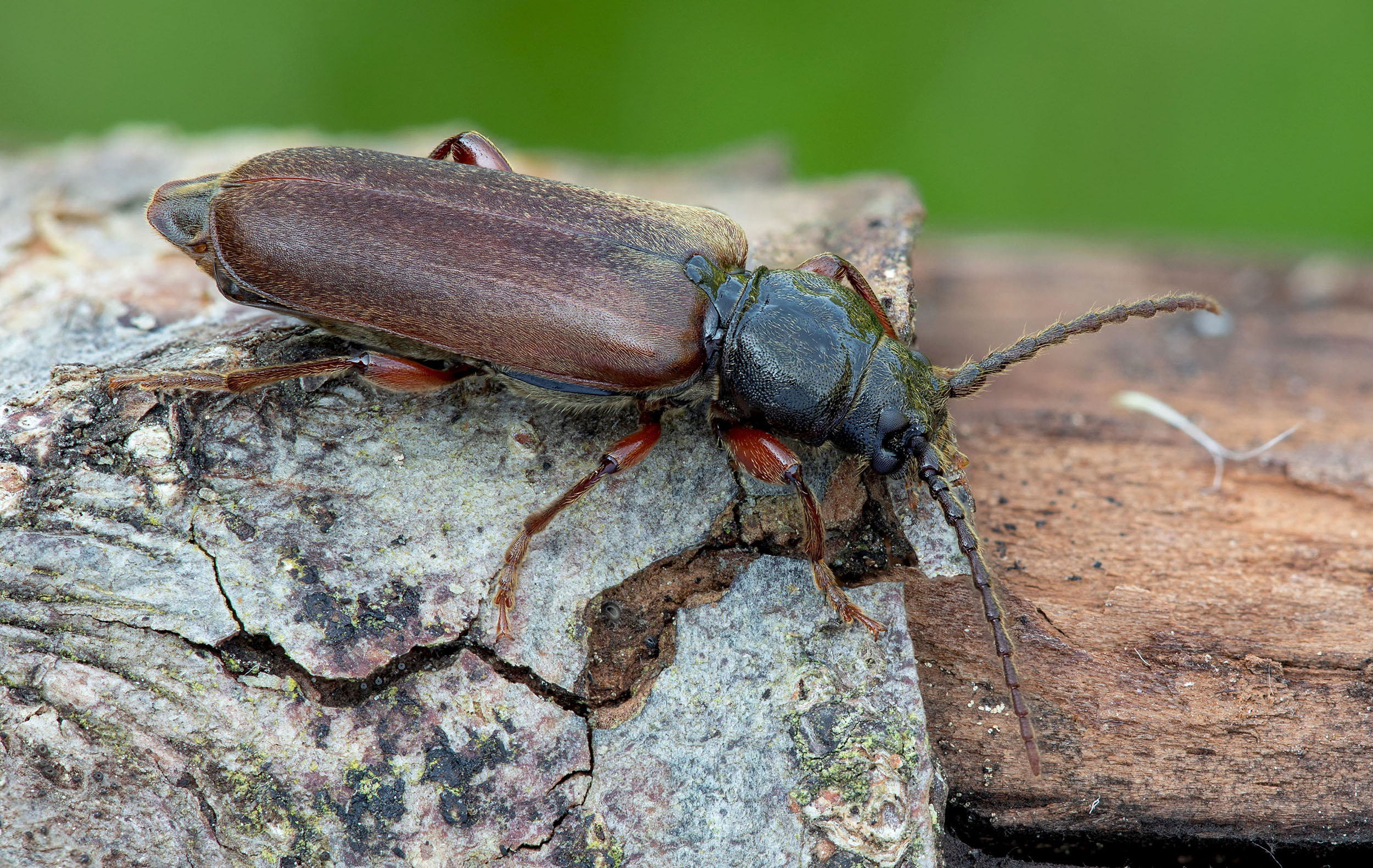Subfamilia: SPONDYLIDINAE / Tribus: TETROPIINI

[Photo © Kirill V. Makarov, click on the picture for 4K resolution]
Tetropium castaneum is a common Cerambycid species occuring almost in whole North-Palaearctic forest zone from Spain to Japan. The taxonomic status of the East-Asian populations needs special study, it is possible that the name “T. castaneum” is assigned to another species or even several species [▽]. T. castaneum larvae develop under the bark of weakened, uprooted, broken or felled coniferous trees (Pinus, Picea, Abies, Larix). On standing trees, the infestation is usually concentrated in the lower part of the trunk with a thicker bark. Lying wood, especially located in a shaded and humid environment, is attacked regardless of the strength of the bark. The larvae create galleries under the bark and, before pupation, bore a hook-like corridor in sapwood (usually in depth 2-4 cm) which at the end extends into the pupal cell. In the case of thick bark, part of the larvae pupate in the bark, less often between the bark and the sapwood. Life cycle 1 - 2 years (depends on climatic and feeding conditions). Adults, active from May to August, are crepuscular and nocturnal and during days mostly hidden under bark scales or felled wood [✧][▽].
Body length: 10 - 18 mm Life cycle: 1 - 2 years Adults in: May - August Host plant: polyphagous in coniferous trees (Pinus, Picea, Abies, Larix) Distribution: entire North-Palaearctic forest zone
Tetropium castaneum is one of the most variable Cerambycidae species in terms of coloration, which is clearly evident in the specimens shown here.The mounted beetles were captured in: ♂KI Tserkovnaya Bay (Бухта Церковная) environs (Shikotan island, Kuril Islands, Yuzhno-Kurilsky district, Sakhalin region, Russia); ♂E Pavlovskaya Sloboda (Павловская Слобода) village environs (N55°47′57″ E37°4′26″; Istrinsky district, Moscow oblast, Russia) on June 9-13, 2020 using window traps; ♀P alluvial forest at Kedrovaya (р. Кедровая) river (N43°06′30″ E131°31′55″; 100 m a.s.l, 8 km SSE of Barabash, Khasansky district, South of Primorsky krai, Far Eastern Federal District, Russia) on May 24, 2015.
The living beetles were photographed in Proseč environs (Chrudim district, Pardubice region, East Bohemia, Czechia) on June 19, 2021 and in Podbanské environs (Pribylina, Vysoké Tatry Mts., Liptovský Mikuláš district, Žilina region, Slovakia) on July 29, 2020.
Collected by Kirill V. Makarov and Daniel Rydzi
[✧]
Sláma M.E.F.:
Tesaříkovití – Cerambycidae České republiky a Slovenské republiky
[ Cerambycidae of the Czech Republic and Slovak Republic ]
Milan Sláma private printing, Krhanice, 383pp [pages 76-77], 1998 [ISBN: 80-238-2627-1]. [download]
[▽]
Danilevsky M.L.:
Longicorn beetles (Coleoptera, Cerambycoidea) of Russia and adjacent countries. Part 1.
Higher School Consulting, Moscow, 550pp [pages 374-375], 2014. [download]



[Photo © Daniel Rydzi]
| Subfamilia | Spondylidinae Audinet-Serville, 1832 |
| Tribus | Tetropiini Seidlitz, 1891 |
| Genus | Tetropium Kirby, 1837 |
| Species | Tetropium castaneum (Linnaeus, 1758) |
